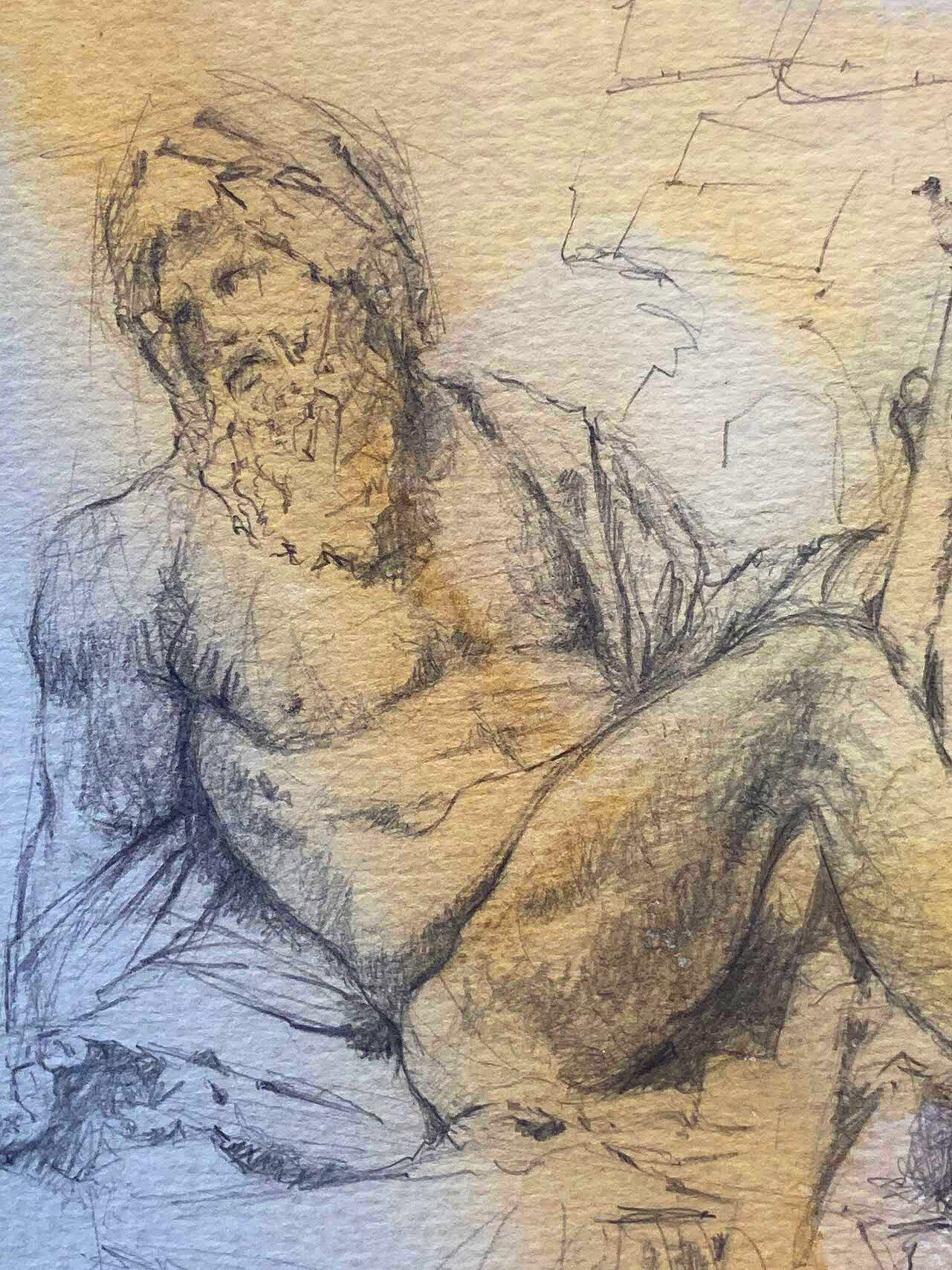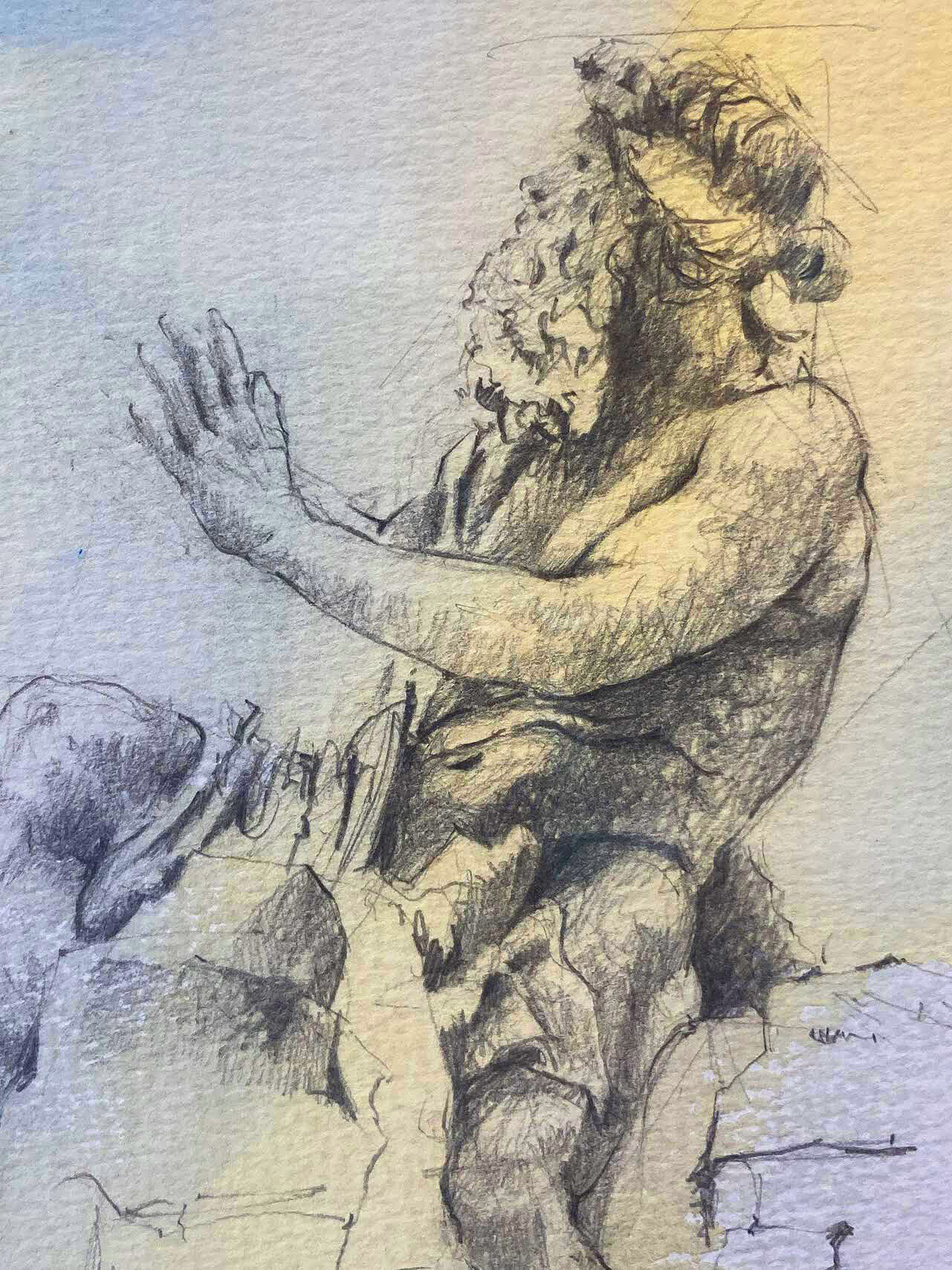These old sketches of mine explained.
“Through the years, I’ve had these two sketches displayed in my place of residence. I’ve never fully explained them to anyone other than my wife (Lana) so, here it goes... ”
In 1990, I had the good fortune of finishing up some graduate studies in Rome, Italy. As with most days while there, I had the fabulous opportunity to simply go out and explore between class lectures, test taking, and paper writing. One morning, while at the Piazza Navona I stood in amazement in front of this giant, Egyptian obelisk (tall, four-sided, tapering tower) in the center of a rather active fountain with four “god-like” statues encircling. I had seen and read of this in art history textbooks—Giovanni Bernini’s Fountain of the Four Rivers. It was a tribute to four major rivers of the four continents through which papal authority had spread: the Nile representing Africa, the Danube representing Europe, the Ganges representing Asia, and the Río de la Plata representing the Americas. I never returned to the piazza to sketch the other two sculptures— the Nile or the Rio.
Sculpture Controversy in 1650?
Little did I know at the time, but this fountain (unveiled in 1651) created a bit of friction. There was opposition from the people of Rome for several reasons.
The Pope at this time—Innocent X—had the fountain built at public expense even during an intense famine. The city often spoke of riots and certainly protested. Some left hand-written notes on the stone building blocks of the obelisk. "We do not want Obelisks and Fountains, it is bread that we want. Bread, Bread, Bread!" The Pope swiftly arrested the known authors and followed up by placing spies along the piazza.
Roman Jews were allowed to market used clothing in this area until the statue came along. They tried to continue but were expelled by authorities because they detracted from the intended “magnificence”.
Some things never change. Public art will always cause some sort of reaction—favorable and unfavorable. Who knows? Had I been a Roman citizen in the mid-1600s, I too may have objected to the art. However, fast-forward nearly 400 years to this day, I am inspired and amazed by the piece and the work of Bernini.
Details from these two sketches below:
If you would like to see more works like this (or even not like this), feel free to visit my studio by appointment at 113 North Three Notch, Troy, AL. Enjoy!



